Kethem again; this time in a very abstract system that's more about an interactive story with semi-random outcomes of player actions.
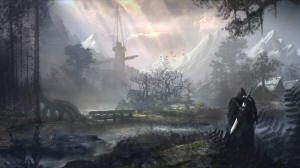
Sidion BG (2015)
Second version of "Sidion - Death of the King" from 2004; that one was all Java. This is all Google Cloud; totally web based with simplified mechanics that would make it plausible to implement as a physical board game.

A shared free flowing role playing / interactive story run off of the Gaia web site.

Wizard War (2012)
An attempt to create a variation on a "Dominion" style deck building game mixed with some movement/tactical considerations using Google Web Toolkit.

The Kethem campaign, rebooted on MapTool. You can see the second or first campaigns as well.
Wealth Of Nations (2009)
Wealth Of Nations is a macroeconomic game based very loosely on Keynesian economics, with a little mili-diplomacy thrown in for good measure. The name is copied, of course from Adam Smith's magnum opus on the topic, and I kind of like it as, after your first win, you can say "I won one WON." As one of the "G8," the reformed Group Of Eight that controls the world's largest economies, you must use a combination of economic production, military prowess, and politicking to be the ultimate leader of the organization. Other members, however, can effectively trip you up if your plans are too obvious.

Hacker (2008)
Break into servers, steal credit cards and military secrets, brag about it. What's not to like?

Proving Grounds (2008)
Proving grounds is a Chainmail version of a D&D dungeon crawl, that is, a statistical abstraction of the movement and combat involved in such a venture. Each player runs a party of adventurers who are trying to win a competition staged by the Invincible Overlord by clearing out a dungeon carefully stocked with Goblins, Orcs, Urakai and Dragons. In order to win, they must prove themselves generous, ingenious, and successful. Generous by providing the most of a single kind of gem to the Overload, ingenious by collecting the most gold, and successful either by capturing the most rooms in the dungeon or surviving with the most heroes.
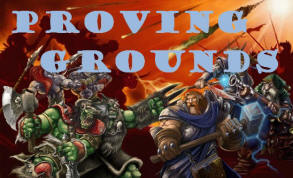
MHGC II (2007)
Kind of cheating, I'm afraid... this is just a shiny new GUI wrapped around the old MHGC game engine. Resurrection occurred at the request of some of the old players crawling out of the woodwork and asking for a new game! On the other hand, the rules have evolved quite a bit and I think it's a more balanced game than the original.
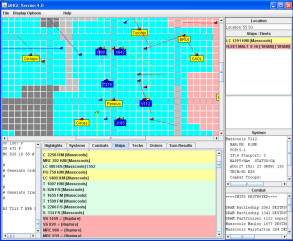
Swords Of Allia (2007)
Well, this really wasn't my game, but I did the web page and some initial stories around it. Fell apart rather early on due to bugs in Never Winter Nights, unfortunately.
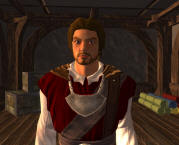
Counter Strike: Source (2006)
This is, in Counter-Strike Parlance, a "surfing map," created at the request of my son. By setting a in-game parameter (sv_airaccelerate) to 100, you can "slide" down the long concrete ramps suspended in space to get to better weapons. It has a jail, teleportals, etc.
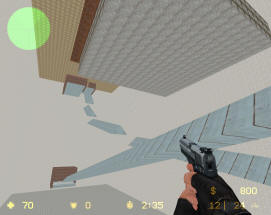
Timeline (2005)
Timeline is a bidding and tile laying game. An international group of scientists have perfected a time machine and are going to turn it over to the government in 40 hours. At a celebration where they’ve all been drinking heavily, they realize they have the potential to change history and end up agreeing to a competition to see who can change the timeline and accelerate technology development the most.

Sidion... Death of the King (2004)
Sidion, Death of the King is a game of power, money, and magic. As the King’s health fails, the eyes of the Kingdom turn to his many sons, one of which will take up the mantle of Sidion’s throne. The Archbishop will select the new King, but ancient tradition provides strict guidelines on picking the successor. Each Prince must gather money, magic, and political favors to prove their worth, while spending them at the same time to install cronies in the important Baronies and collect ancient artifacts of past Kings in order to win the support of the nobles.

Slime Mold Aggregation Conquest (SMAC) (2003)
You’ve always
known you were a slime ball. Now
you have your chance to prove that you are not just a slime, you are the
KING of slime. Your job is to
waste the other vile colored slimes off the face of the petri dish.
It’s a slime-eat-slime world, after all.

Court of the Purple Robes (COPR) (2001)
The Court of the Purple Robe is
a web based multiplayer game that simulates the machinations behind the
Court of the Purple Robe, taken from The Court of the Purple Robes from
the Imperial courtiers at the Citadel of Avanthar, out of Professor
Barker’s Empire of the Petal Throne.
In the game, players compete to
be the power behind the throne, influencing decisions by the Emperor
through the various Palaces of Tekumel and through the heads of the major
Clans.
Turns are fast, typically under two minutes. Negotiations between players… sometimes less so.

The Kethem Campaign is a play-by-Email Fantasy Role Playing (FRP) game (I also publish it in Interregnum); the following writeups include the game plus background/mechanics used to make it playable. The campaign scenario is your typical post-holocaust tale. Humanity, once prosperous and technically advanced (magic tech, of course), gets trashed for reasons not clear at the beginning of the story. One final bastion of civilization (Kethem) survives the long night. Now things seem poised on the edge of turning around, and it is time for adventurous, entrepreneurial types to reclaim mankind's heritage. The question of why the original collapse occurred and whether the factors... or people... that caused it are still around remains (evil chuckle from the shadows).
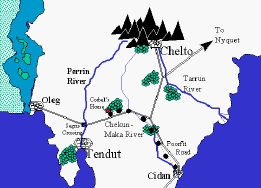
Towers3 is my Quake II Deathmatch level. It can be played "stand alone," with the only objective elimination of the bad guys (not easy on "hard"... sneak around a lot until you find a decent weapon).
It consists of two towers in opposing corners of a courtyard and a basement / dungeon. The towers are connected by two catwalks. Ammo is plentiful on the tower level, as are weapons in the dungeon, encouraging movement. There are not may places to lurk; most locations have at least two entrances.
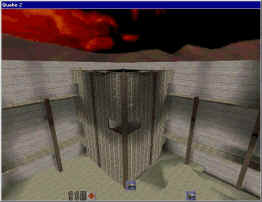
ATF is your typical expand / grow / kill everyone else fantasy conquest game with a meta-FRP (Fantasy Role Playing) theme. You have a mix of standard mud slogging military units along with a number of super-normal type fighters, magic users, clerics, theives, and monsters to use in conquering the world. You have to balance exploration, military, economic, technological and magic advances to be crowned "Grand Poobah of the Toriod."
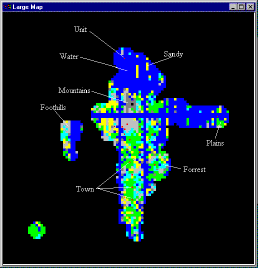
Mega Hyper Galactic Conquest (MHGC) (1995)
MHGC is your typical expand / grow / kill everyone else space conquest game. The name is derived from an old game I wrote and ran at Rensselaer Polytechnic Institute (RPI or the 'tute) and HyperEconomic Diplomacy (a.k.a. GeoDiplomacy or Geodip). I was playing Geodip at the time I became motivated enough to ruin my life with this incredible time sink. The game is at best vaguely related to either of these preceding games, so don't base any strategies on the name selection.
In the game, players attempt to balance expansion, capital investment, technology investment, and military conquest in order to be crowned "Grand Poohba of the Universe."
